Editor of this issue: Violeta Kelertas
Copyright © 2000 LITUANUS Foundation, Inc.

|
LITUANUS
LITHUANIAN QUARTERLY JOURNAL OF ARTS AND SCIENCES
Volume 46, No.2 - Summer 2000
Editor of this issue: Violeta Kelertas ISSN 0024-5089
Copyright © 2000 LITUANUS Foundation, Inc. |

|
THE SCOPE OF AUDRIUS PLIOPLYS' ART WORK EXPANDS
At the beginning of his career as an artist, Audrius Plioplys' art had been dominated by the purest elements of conceptualism. At his 1981 exhibit, he displayed a work abut a point. He drew a point with a pencil on a piece of white paper, erased the point, signed the empty picture and hung it at the exhibition. Later, as he was writing and publishing his medical-neurological research articles (he is a neurologist), he clipped his published works, framed and exhibited them as his works of art. That was a step in the direction of more elaborate conceptualization than erasing of a point. With time, Plioplys decided to incorporate photographs from his family album into his opuses. He thought that the very fact that the snapshots were exhibited, raised the value of the images to that of fine art. It must be admitted that in fact that was true art, because one of the hallmarks of conceptual art is the courage of the author to sign whatever he considers to be his art. Then Plioplys started creating visual abstractions about human consciousness. That was still another step away from pure conceptualism, and a step closer to the incorporation of more of the esthetic elements into his art.
In the exhibit at the Balzekas museum of Lithuanian Culture in April, 2000, Plioplys reached a point in the development of his esthetics that totally overwhelmed the prior bare-boned primitivism of his early works. The visual elements of these images were taken from Cajal's drawings of neuronal networks of the human brain which the author enhanced by using computerized coloring technique. The images looked beautiful featuring primary colors at their brightest. Behind the colorful, web-like neurological abstractions, Plioplys incorporated images about his own past and included verbal presentations about transcendence. These images were barely visible, emerging thorough the thin neuronal threads and giving the impression that they were deeply submerged visual memories.
The primary theme and purpose of the exhibit was to find the relationship between human consciousness, materialism, and the spirituality of the mind's created objects. Plioplys tries to do this by delineating two approaches to human mental processesmemory and abstract thought.
The phenomena of memory are represented by overlaying of one image on top of another: Behind the web-work of neuronal threads an actual real-life photograph is hidden. The titles of the images are written directly on the works themselves: "University of Chicago, " "Mexico City, " "Pilviškiai, Lithuania. " These are the places the author has visited in the past. Their memories are still present in his mind. Even though the nervous system where these memories are lodged is a physiological entity, it is nevertheless capable of "jumping" into another sphere of existence. Time extending itself into the past is a non-corporeal aspect of being. The phenomenon of human memory is capable of doing just thatit transcends mere material elements and creates objects that assume spiritual qualities. Memory is a combination of matter and spirit. This relationship is not clearly expressed by the author of the exhibit in the sense that he does not state it explicitly, but leaves it to the viewer to arrive at it by himself. Plioplys is aware of the fact that the hypothesis of spirituality emerging from matter is only slowly gaining ground among researchers, and therefore he proposes to lead the viewer in that direction cautiously. This ambivalence, however, is diminished when he approaches the combination of matter (neurons, nerve terminals) with the brain's ability to create abstract thought.
The title of the exhibit incorporates theological and scientific terminology: "Neurotheology: from Christ to Cajal. " Using handsome lettering, the author creates captions of the pictures featuring scientific and religious references"Mathematical Thoughts, University of Chicago, " "Thoughts of ancestral religious rites, Pilviškiai, Lithuania. " Overlaid on top of the images of neuron systems and the pictures of his remembered past, these titles seem to say that ordinary material principles are capable of evoking purely spiritual effects. These effects include not only abstract thought, but also thoughts about transcendence. This fact takes the human brain one step further beyond itself. The author tackles theological issues in an attempt to show that using neurological networks it is possible to seek contact with the Absolute Being which presumably transcends the limits of the material universe. Several neuronal networks are entitled "Theological Thoughts". Here again, one is faced with the issue that the nervous system creates thoughts about the divine. In one work, there is a quotation from the Gospel of Thomas: "Jesus said, if flesh came into being because of spirit, that is a marvel, but if spirit came into being because of the body, that is a marvel of marvels" (29: 1-2). Extending their hands and arms into realms that do not belong to them, neurons far exceed their natural capabilities. How that happens, no one knows. But the fact is that it is happening even in everyday human experiences.
Audrius Plioplys, having wandered through the most complex labyrinths of material existence, speaks through his art about the fact that the material world is not everything. It touches another order of Being that floats above it. Even though we approach it as if through a fog, it is nevertheless real. The neurons and neuronal networks that we see through the microscope produce a whole that is considerably more than the sum of its individual parts.
Algimantas Kezys
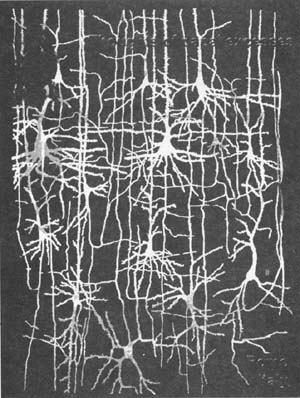
Audrius Plioplys, Thoughts of papal excesses, Rome, Italy.
2000, 48"x 60", color digital image on canvas.
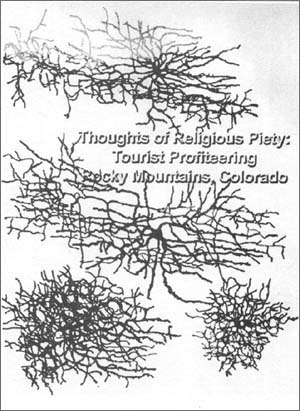
Thoughts of Religious Piety: Tourist Profiteering, Rocky Mountains,
Colorado. 2000, 48"x 60", color digital image on canvas.
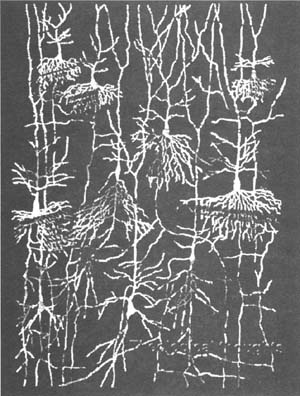
Audrius Plioplys, Theological thoughts. 2000, 48"x 60",
color digital image on canvas.
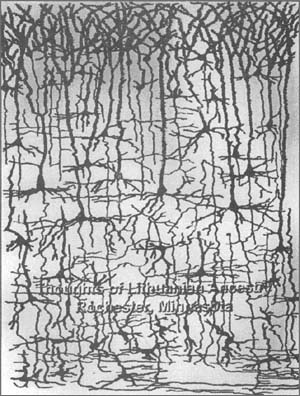
Audrius Plioplys, Thoughts of Lithuanian Ancestry. Rochester,
Minnesota. 2000, 48"x 60", color digital image on canvas.
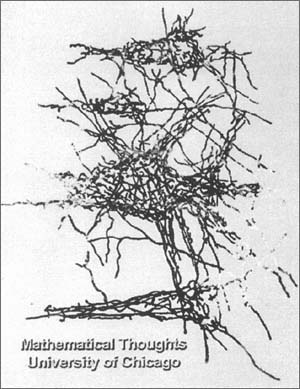
Audrius Plioplys, Mathematical Thoughts. University of Chicago.
2000, 48"x60", color digital image on canvas.